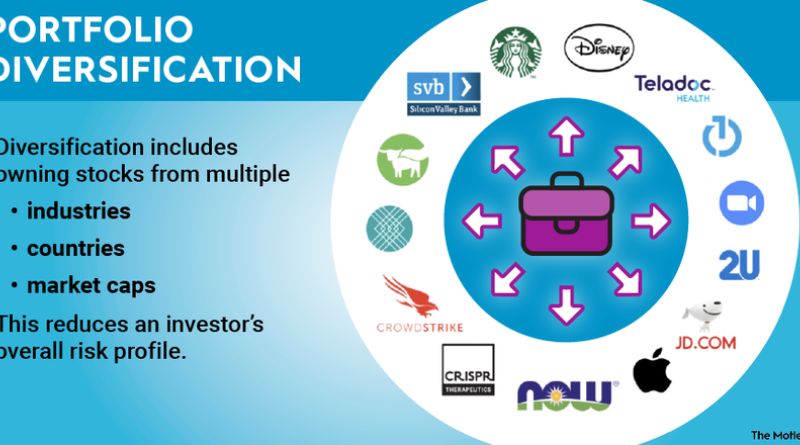Key Takeaways:
- Diversification helps spread risk across various investments, reducing the impact of a single failure.
- A well-diversified portfolio can improve overall business stability and open new market opportunities.
- External factors, like market volatility and economic shifts, can be mitigated with a diversified approach.
- Understanding different industries and market trends is crucial for adequate diversification.
Understanding Business Diversification
In today’s rapidly evolving economic landscape, diversification is more than just a defensive strategy; it is a proactive approach to sustain and enhance business growth. By dispersing investments across various sectors, businesses can significantly reduce their dependency on the performance of a single segment. This strategic allocation helps mitigate risks associated with market volatility and enhances the potential for higher returns. The essence of diversification lies in its ability to offer a safety net during unforeseen downturns in any particular sector.
Take, for instance, organizations like DAF Hold Co which illustrate the quintessential value of diversification by broadening their investment portfolio. This is achieved through understanding and employing different types of diversification: product diversification seeks to expand product offerings; market diversification focuses on entering new markets, thereby increasing the customer base; and investment diversification spreads financial assets across various sectors. Each type of diversification buffers against specific market shifts, proving invaluable in maintaining a competitive edge.
Benefits of a Diversified Portfolio
The merits of a diversified portfolio are numerous and well-documented. At its core, diversification minimizes risk by reducing reliance on any single investment. This ensures that adverse developments in one area do not disproportionately affect the entire business. Furthermore, diversification can enhance overall financial performance. By tapping into different market cycles, companies can smoothen their revenue streams across economic highs and lows, ensuring more predictable financial outcomes.
It’s informative to see how renowned companies have leveraged insights from resources like Harvard Business Review on diversification to craft robust growth strategies. These strategies often involve investing in sectors or geographical markets that respond differently to economic stimuli, thus capitalizing on varying economic conditions. Real-world applications of these strategies have led to sustained growth even amidst financial challenges, demonstrating the practical advantages of diversification in mitigating risk while capturing new opportunities.
Identifying Opportunities for Diversification
Adequate diversification starts with keen insight into potential markets or investments ripe for development. Recognizing these opportunities involves clearly understanding current market trends and consumer behavior. Utilizing a mix of qualitative and quantitative analysis can help businesses pinpoint these opportunities effectively. Market size, competitive landscape, and entry barriers are critical factors that companies need to evaluate to ensure a sound diversification decision.
Incorporating advanced analytical tools assists in identifying the sectors with the highest potential returns relative to the risk. This targeted approach identifies where to diversify and clarifies the ‘how,’ which is crucial as businesses seek to align their diversification efforts with overarching strategic objectives. Through diligent research and strategic planning, companies can ensure a successful expansion into new markets, fortifying their portfolios against future market fluctuations.
Strategies for Effective Implementation
While the theory of diversification is simple, its practical implementation requires careful planning and strategy. An effective plan must align diversification initiatives with broader business objectives and core capabilities. It is essential to prioritize diversification paths that complement and enhance existing operations rather than those that diverge from them, thus avoiding resource overextension.
The key lies in measured and strategic planning. Developing a phased approach allows for incremental expansion, providing time to integrate and adapt to new market dynamics while minimizing risk. Ensuring that new ventures align with the company’s culture and values is equally essential, facilitating smoother transitions and more long-term success. An adaptive strategy that welcomes flexibility can respond to market feedback, ensuring that the diversification efforts remain efficient and aligned with the company’s goals.
Challenges and Pitfalls
No diversification strategy is without its challenges. Over-diversification can lead to resource dilution, distracting from the company’s core strengths and potentially leading to operational inefficiencies. Conversely, insufficient diversification might not provide adequate protection against market downturns, leaving businesses vulnerable to sector-specific shocks.
Learning from companies that have faced such pitfalls can provide valuable insights. Many organizations have made the mistake of diversifying too quickly without proper assessment or into areas lacking expertise, resulting in significant financial strain. Continuously evaluating and recalibrating diversification strategies can help navigate these potential pitfalls, ensuring sustained growth and stability.
The Role of Market Research in Diversification
Market research is the bedrock of any successful diversification strategy. Understanding customer needs, preferences, and emerging trends is paramount in identifying viable diversification paths. Through comprehensive research, companies can discern genuine opportunities from fleeting fads, thus positioning themselves for sustainable growth.
Resources like Investopedia guide effective research methodologies, emphasizing the importance of both primary data collection and secondary data analysis. By leveraging these research insights, businesses can develop a nuanced understanding of market dynamics and craft diversification strategies that maximize potential while minimizing risk.
Monitoring and Adjusting Diversification Efforts
Once diversification strategies are underway, ongoing monitoring becomes crucial to assess their effectiveness. Implementing performance metrics and success indicators allows businesses to critically evaluate the impact of their diversification decisions. These metrics provide actionable insights in making necessary adjustments to align with changing market conditions.
Businesses must also maintain flexibility in their diversification strategies. The ability to pivot or adjust strategy in response to market feedback and external changes is invaluable. This adaptability ensures that diversification efforts continue to serve their intended purpose of risk reduction and revenue stabilization.
Future Trends in Business Diversification
The landscape of business diversification is continually evolving, influenced by technological advancements and shifting global market dynamics. Digital transformation, in particular, has sparked new avenues for diversification, enabling businesses to reach broader audiences and enhance operational efficiencies through innovative technologies.
Staying informed about these evolving trends is critical for businesses aiming to remain competitive. Embracing technological changes and integrating digital tools into diversification strategies can unlock new growth opportunities, drive innovation, and strengthen market positions. Forward-thinking businesses anticipating and adapting to these trends are more likely to sustain their competitiveness and secure their place in the market’s future.






